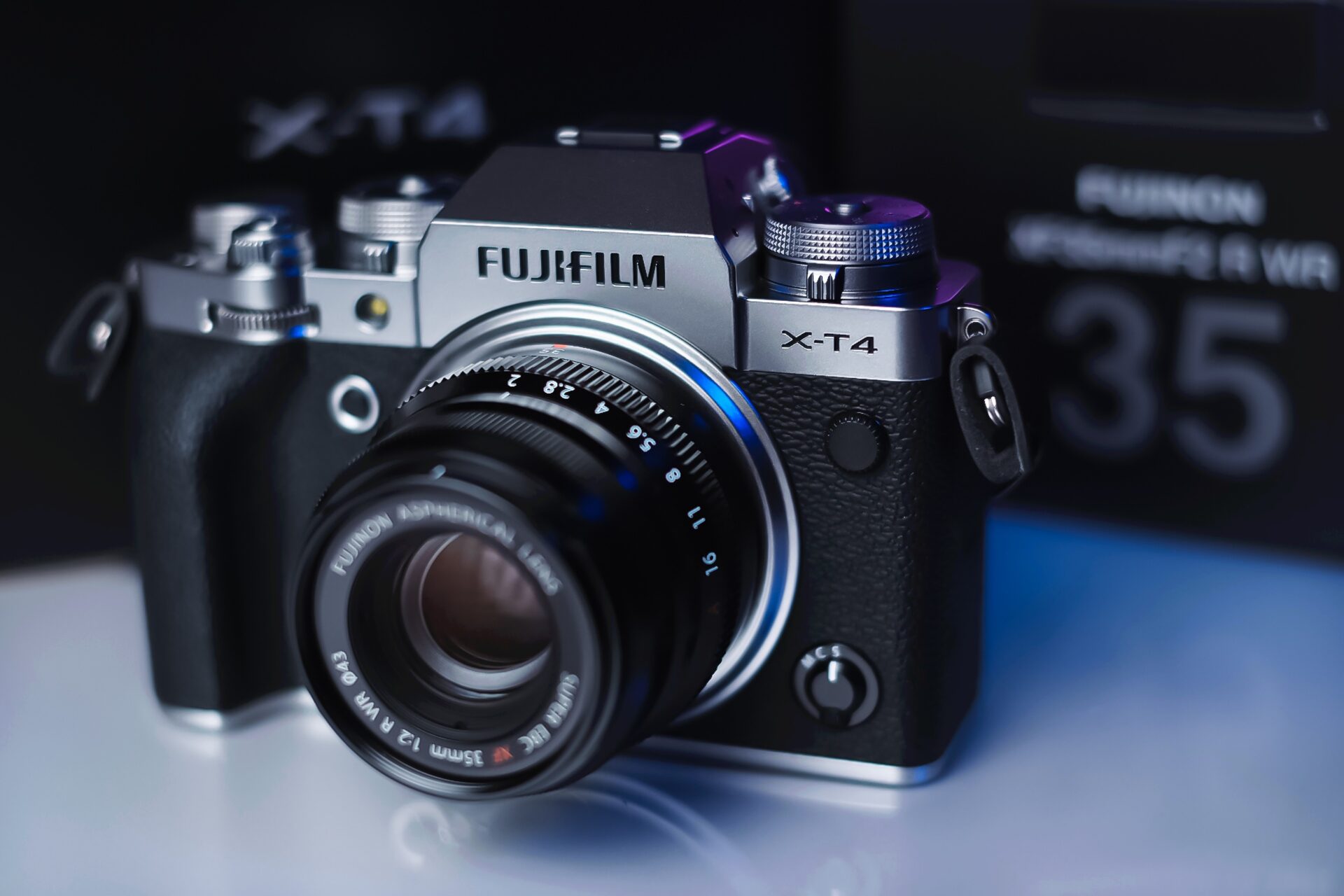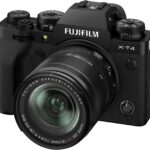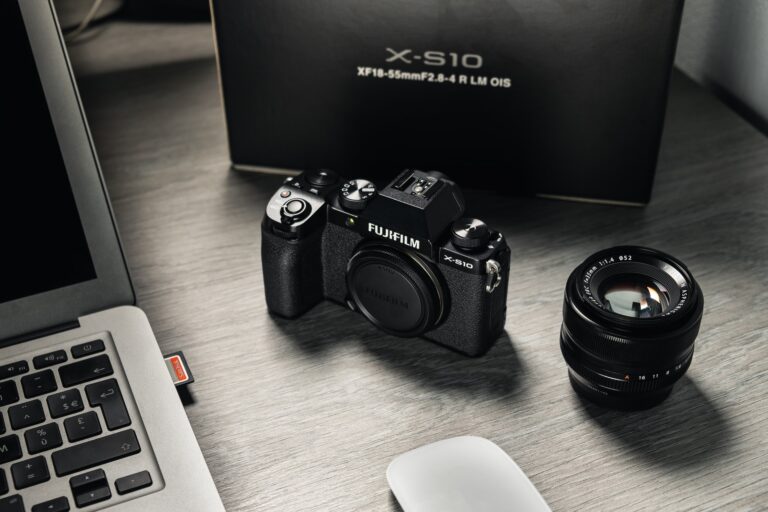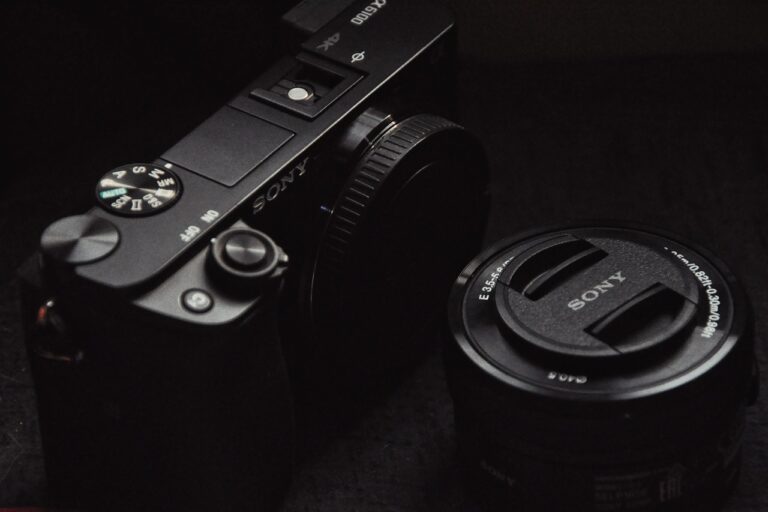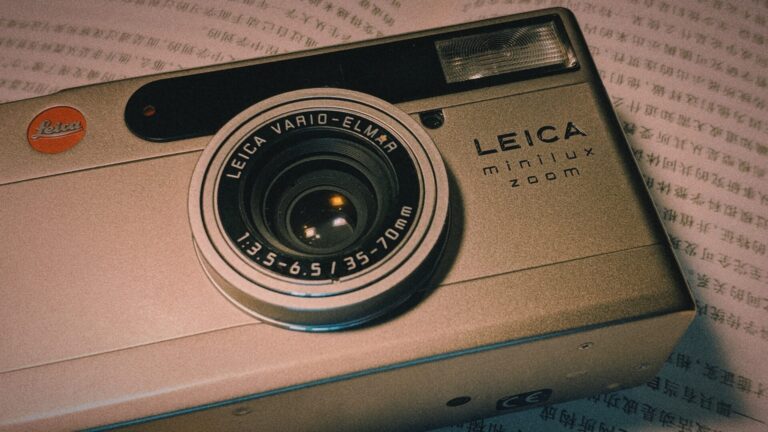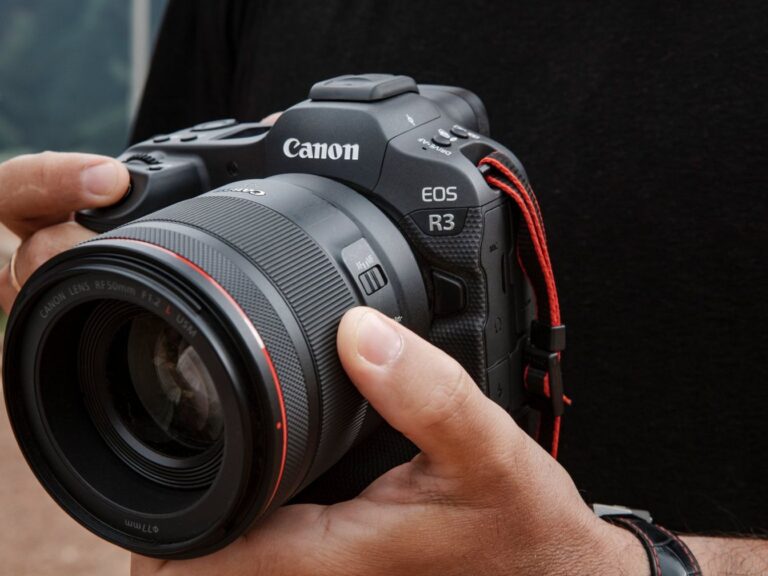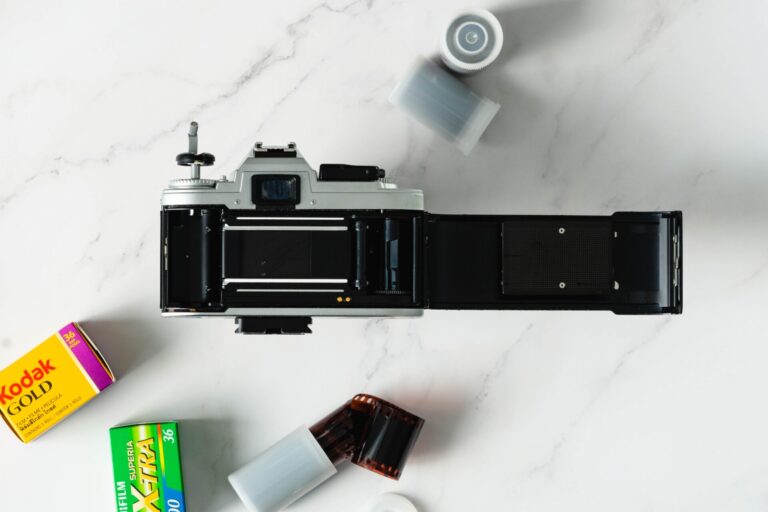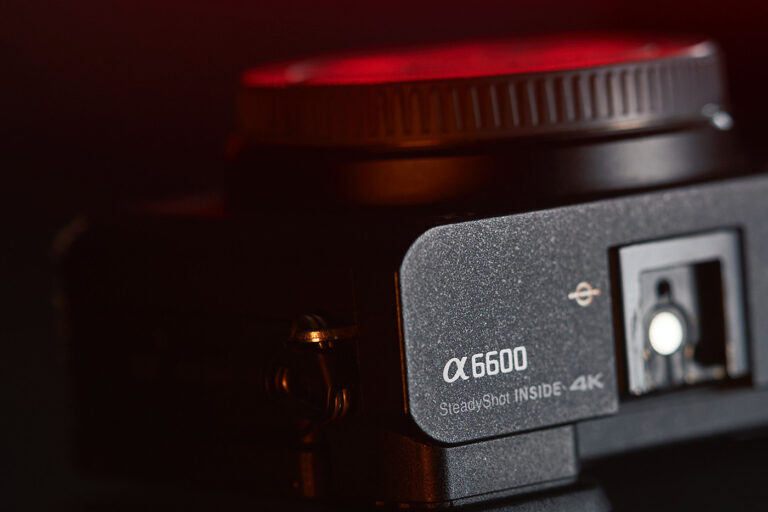Review: How does the Fujifilm X-T4 hold up after a year of traveling?
Fujifilm X-T4
$2,099.95The Fujifilm X-T4 is a flagship mirrorless camera released in 2020, and it remains a popular choice for photographers and videographers alike. With its retro design, robust build, and advanced features, the X-T4 has earned a reputation as one of the best APS-C cameras. But with newer models coming out and the technology advancing rapidly, you might wonder if the X-T4 is still worth buying in 2023.
This review will explore the camera’s unique features, including its powerful in-body image stabilization, versatile video capabilities, and intuitive controls. We’ll also compare the X-T4 to other cameras in its class and discuss its performance in various scenarios, such as traveling with the camera.
By the end of this review, you’ll have a better idea if the Fujifilm X-T4 is the right camera for you in 2023.
Page Contents
Unique Features of the Fujifilm X-T4
The Fujifilm X-T4 is a highly regarded mirrorless camera that has garnered praise for its unique set of features. One of the most prominent among these is the in-body image stabilization (IBIS) system. This system uses a sensor-shift mechanism to stabilize the image, allowing photographers to take sharp, handheld shots at much slower shutter speeds than possible. This can be especially useful in low-light situations or using longer focal lengths. The X-T4’s IBIS system provides up to 6.5 stops of compensation, which is among the best in the industry.
Another standout feature of the X-T4 is its autofocus system. The camera uses a hybrid system that combines phase detection and contrast detection to quickly and accurately focus on subjects. The X-T4’s autofocus system has been improved over previous models, with enhanced face and eye detection capabilities. This makes it easier to capture sharp, well-focused images of people, even when shooting at wider apertures.
The X-T4 also boasts high-speed continuous shooting capabilities. With a mechanical shutter, the camera can shoot up to 15 frames per second, making it an excellent choice for capturing fast-moving subjects such as sports or wildlife. This rapid-fire shooting speed is made possible by the camera’s fast image processing capabilities and high-speed buffer.
The X-T4 offers 4K/60p video recording for videographers with a Cinema 4K (4096×2160) option and F-Log profile. This allows for high-quality video footage with rich colors and a wide dynamic range. The camera also offers a variety of film simulation modes, which emulate the look of classic Fujifilm film stocks such as Provia, Velvia, and Acros.
The X-T4 also features a large, high-resolution electronic viewfinder (EVF) with 0.75x magnification and 3.69 million dots. This EVF provides a clear, detailed view of the scene, making composing shots and preview settings easier. The EVF also has a high refresh rate, which minimizes lag and makes it easier to track moving subjects.



Fujifilm X-T4 Video
The Fujifilm X-T4 is a powerful camera with impressive video capabilities. It features 4K/60p recording, which allows videographers to capture high-quality footage with a resolution of 4096×2160 pixels. This makes it an excellent choice for those looking to create professional-grade video content. Additionally, the X-T4 offers F-Log recording, which is a flat, neutral profile that preserves a wide dynamic range. This makes it easier to color grade the footage in post-production and achieve a cinematic look.
The X-T4 also offers a range of film simulation modes, which emulate the look of classic Fujifilm film stocks such as Provia, Velvia, and Acros. These modes allow videographers to achieve a specific aesthetic without spending time color grading in post-production. Additionally, the X-T4 offers a range of other video functions, such as slow motion recording at up to 240 frames per second, time-lapse recording, and a variety of aspect ratios including 16:9, 17:9, and 1:1.
One of the most impressive video features of the X-T4 is its in-body image stabilization (IBIS) system. This system uses a sensor-shift mechanism to stabilize the image, allowing videographers to take steady shots without the use of a tripod or other stabilization equipment. This can be especially useful when shooting handheld footage or when using longer focal lengths. The X-T4’s IBIS system provides up to 6.5 stops of compensation, which is among the best in the industry.
The X-T4 also features a microphone input and a headphone jack, allowing videographers to record high-quality audio and monitor it in real time. Additionally, the camera offers a variety of other features to aid in video production, such as zebras to indicate overexposed areas, focus peaking to aid in manual focusing, and a waveform monitor to help monitor exposure.
Fujifilm X-T4 VS Fujifilm X-T3
The Fujifilm X-T4 is an upgrade from its predecessor, the Fujifilm X-T3. While the two cameras share many similarities, the X-T4 offers significant improvements. One of the most notable upgrades is the addition of in-body image stabilization (IBIS) to the X-T4. This allows for more stable footage, especially when shooting handheld or in low-light conditions. The X-T3 does not have IBIS, which means that videographers would need to use external stabilization equipment to achieve the same level of stability.
Another significant upgrade on the X-T4 is the addition of a fully articulating touchscreen. This allows users to easily compose shots at different angles and can be especially useful for vloggers or content creators who need to see themselves while filming. The X-T3, on the other hand, only has a tilting screen which is more limited in its range of motion.
Lastly, the X-T4 offers improved battery life compared to the X-T3. The X-T4 has a larger battery capacity and is rated for up to 600 shots per charge, whereas the X-T3 is rated for up to 390 shots per charge. This means that the X-T4 can be used for longer periods without needing to swap out batteries, which is especially useful for content creators who may be shooting for extended periods.
Fujifilm X-T4 VS Sony A7III
When comparing the Fujifilm X-T4 to the Sony A7III, both cameras are excellent options for content creators. One of the main differences between the two is their sensor size. The Sony A7III features a full-frame sensor, which offers superior low-light performance and image quality compared to the Fujifilm X-T4’s APS-C sensor. However, the Fujifilm X-T4 offers a more compact and lightweight design, making it easier to carry around for extended periods of time.
Another difference between the two cameras is their autofocus systems. The Sony A7III features a more advanced autofocus system with 693 phase-detection autofocus points, compared to the Fujifilm X-T4’s 425 autofocus points. This makes the Sony A7III a better choice for tracking fast-moving subjects or for video content where autofocus is critical.
Finally, the Fujifilm X-T4 offers in-body image stabilization (IBIS), which is a significant advantage over the Sony A7III. IBIS helps to stabilize footage and images, especially when shooting handheld or in low-light conditions. While the Sony A7III does have image stabilization, it is not as advanced as the Fujifilm X-T4’s IBIS system.
Fujifilm X-T4 VS Sony Alpha A6600
When comparing the Fujifilm X-T4 to the Sony A6600, both cameras are excellent options for content creators. One of the main differences between the two is their sensor size. The Fujifilm X-T4 has an APS-C size sensor, while the Sony A6600 has a slightly larger APS-C sensor. This means that the Sony A6600 has a slight advantage in terms of image quality and low-light performance. However, the difference may not be significant enough to be noticeable for most content creators.
Another difference between the two cameras is their autofocus systems. The Sony A6600 features a more advanced autofocus system with 425 phase-detection points, compared to the Fujifilm X-T4’s 425 autofocus points. This makes the Sony A6600 better for tracking fast-moving subjects or for video content where autofocus is critical.
Finally, the Fujifilm X-T4 offers in-body image stabilization (IBIS), which is a significant advantage over the Sony A6600. IBIS helps to stabilize footage and images, especially when shooting handheld or in low-light conditions. This feature is especially useful for content creators who may not have access to external stabilization equipment.
Fujifilm X-T4 VS Panasonic Lumix GH5
When comparing the Fujifilm X-T4 to the Panasonic Lumix GH5, both cameras are popular choices among content creators due to their excellent video capabilities. One of the main differences between the two cameras is their sensor size. The Fujifilm X-T4 features an APS-C sensor, while the Panasonic Lumix GH5 features a Micro Four Thirds sensor. While the GH5’s sensor is smaller, it still produces high-quality images and offers a significant advantage in terms of depth of field control.
Both cameras offer impressive video capabilities, with the Panasonic Lumix GH5 offering 4K/60p recording and the Fujifilm X-T4 offering 4K/60p recording with 10-bit 4:2:0 internal recording and 10-bit 4:2:2 external recording. The Fujifilm X-T4 also offers in-body image stabilization (IBIS), which is a significant advantage over the Panasonic Lumix GH5. IBIS helps to stabilize footage and images, especially when shooting handheld or in low-light conditions.
Travel photography with the Fujifilm X-T4
Travel photography with the Fujifilm X-T4 is a great experience due to its compact size, lightweight design, and high-quality image capabilities. The camera is perfect for capturing cityscapes, landscapes, and everything in between.
City Photography
City photography with the Fujifilm X-T4 is an enjoyable experience due to its compact size, making it easy to maneuver around busy streets and crowded areas. Its fast and accurate autofocus system lets you easily capture stunning images of city architecture and bustling streets. The camera’s high ISO capabilities also allow great low-light performance, making it perfect for nighttime city photography.
Landscape photography
Landscape photography is another area where the Fujifilm X-T4 excels. With its excellent dynamic range and color reproduction, the camera is ideal for capturing stunning landscapes. The camera’s APS-C sensor also allows for great depth of field control, allowing you to create beautiful bokeh effects. In addition, the camera’s in-body image stabilization (IBIS) makes capturing sharp and steady images easier when shooting handheld.
Best Fujifilm X-T4 to travel with
When it comes to lenses, we recommend checking out our Fujifilm lens guide. This guide highlights some of the best lenses for the Fujifilm X-T4 when traveling. We recommend a wide-angle lens such as the Fujifilm XF 10-24mm f/4 R OIS lens for city photography. For landscape photography, a versatile zoom lens such as the Fujifilm XF 18-135mm f/3.5-5.6 R LM OIS WR lens is an excellent choice.
With the right lenses, such as those recommended in our “Fujifilm lenses to travel with”-guide, you can take your travel photography to the next level.
In Summary
In summary, the Fujifilm X-T4 is an excellent camera that offers advanced features for both photographers and videographers. Its impressive image quality and versatile shooting capabilities make it a great investment for anyone looking to take their photography or videography to the next level.
While the X-T4 is priced higher than some other cameras on the market, its advanced technology and functionality make it well worth the investment. If you’re looking for a camera that can deliver exceptional performance in a wide range of shooting scenarios, the Fujifilm X-T4 is definitely worth considering in 2023.
Pros
- IBIS for sharper images and smoother video
- Fast autofocus and tracking
- High-quality X-Trans CMOS 4 sensor
- Great battery life
- Wide range of compatible lenses
Cons
- Expensive
- No built-in flash
- Limited touchscreen functionality
- Limited low-light performance
- Complex menu system and controls for some users.

